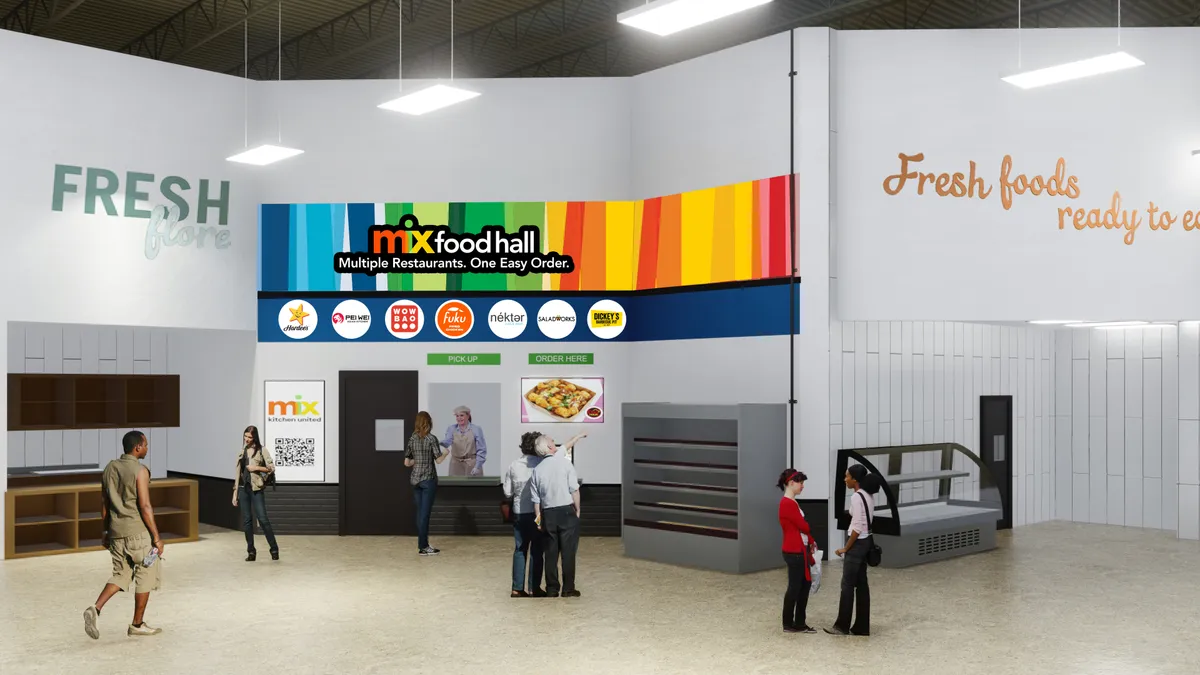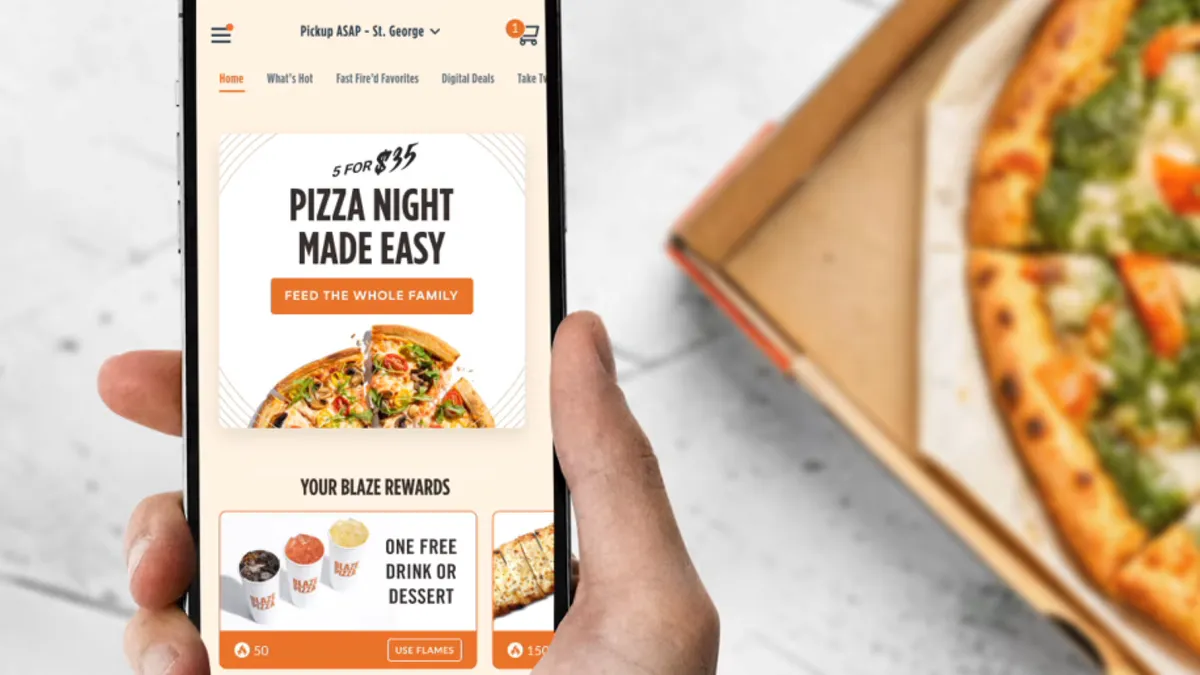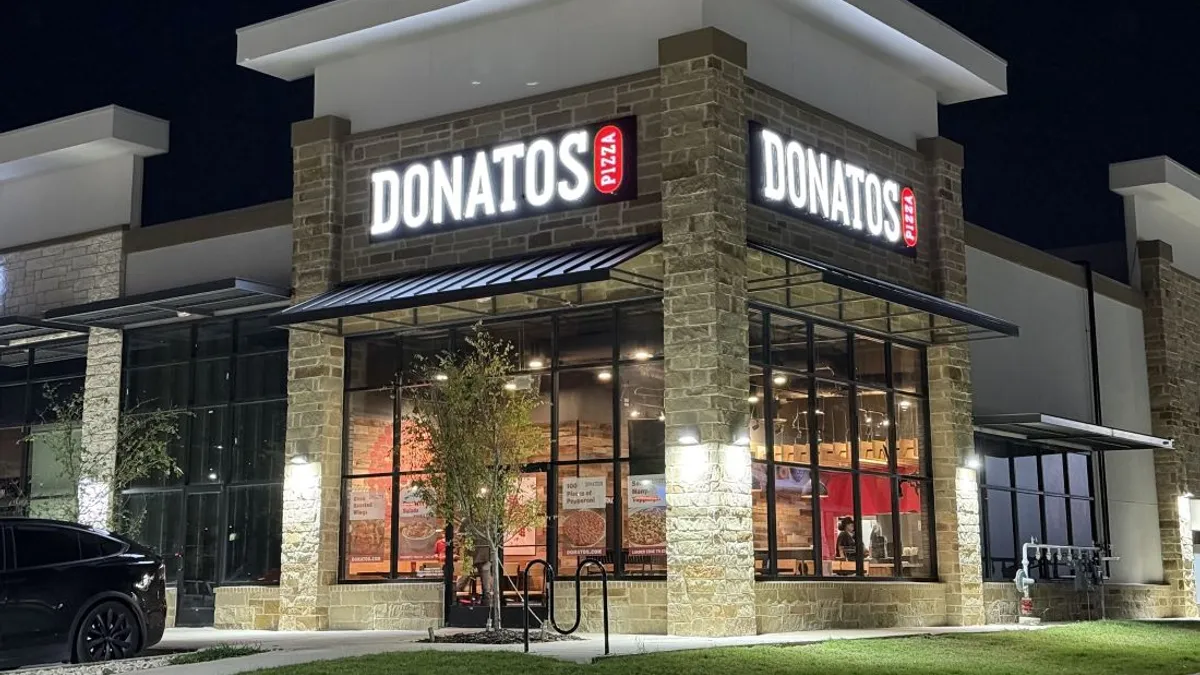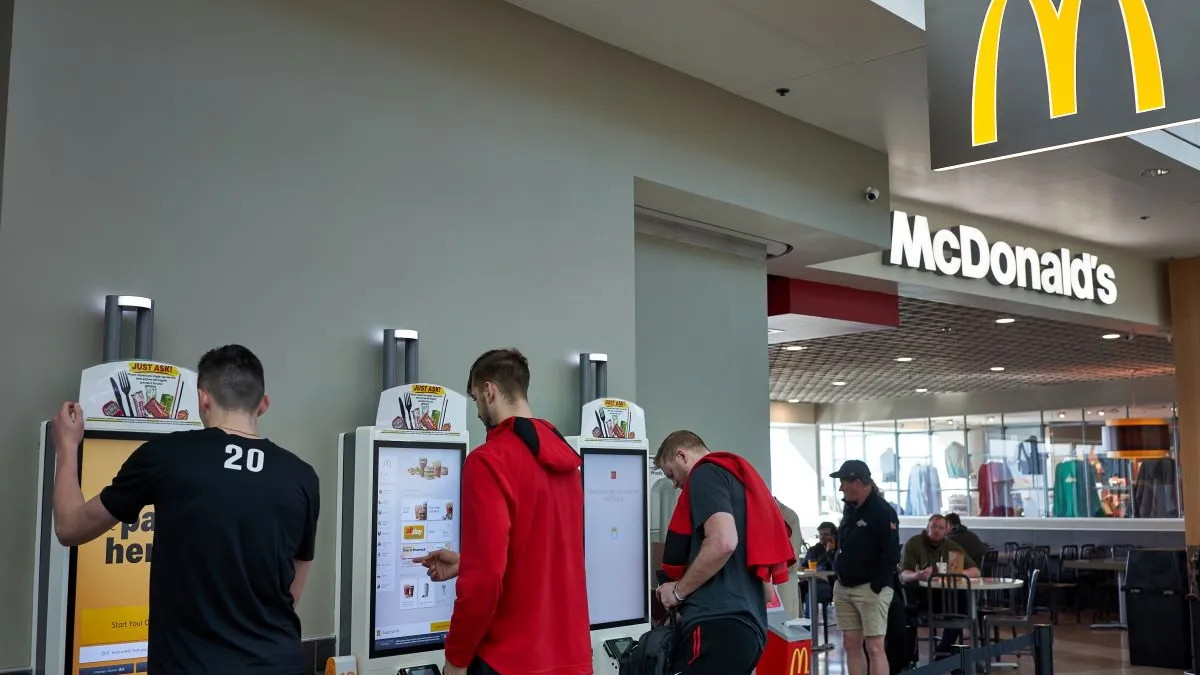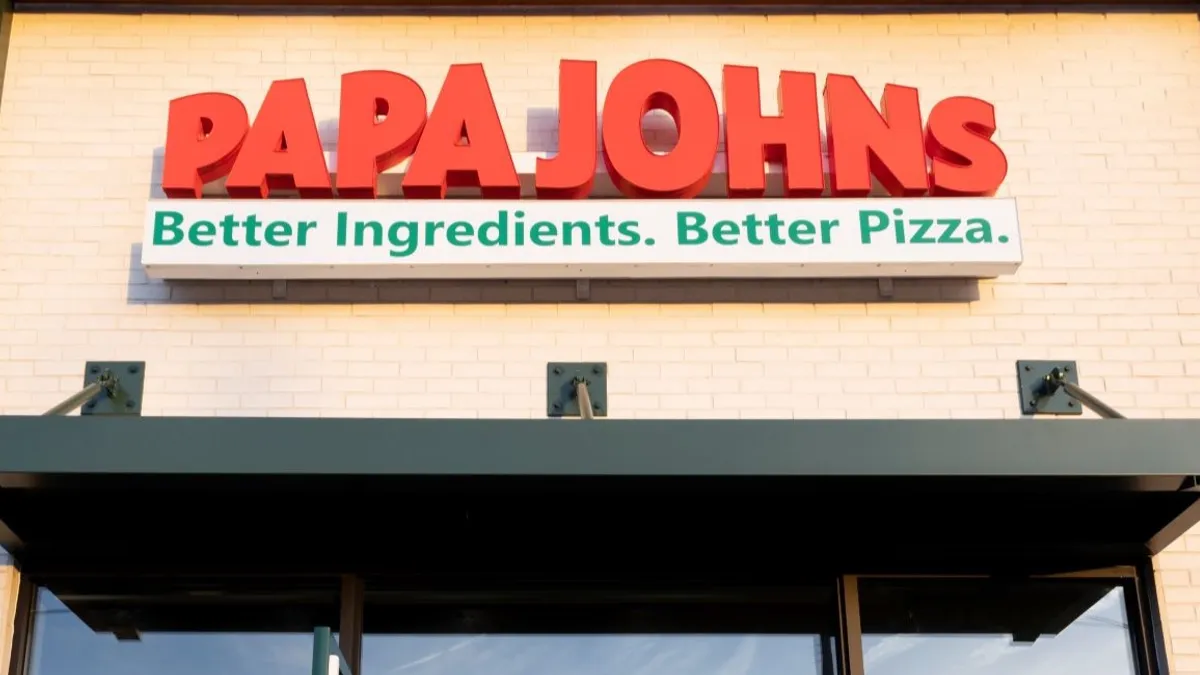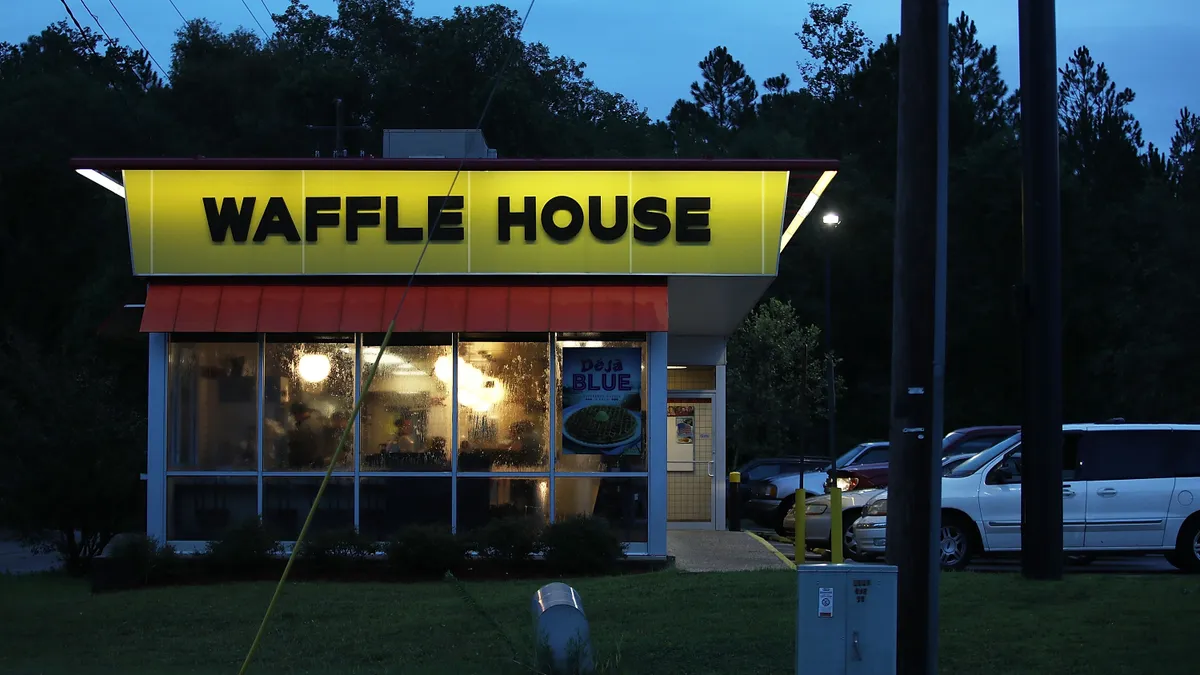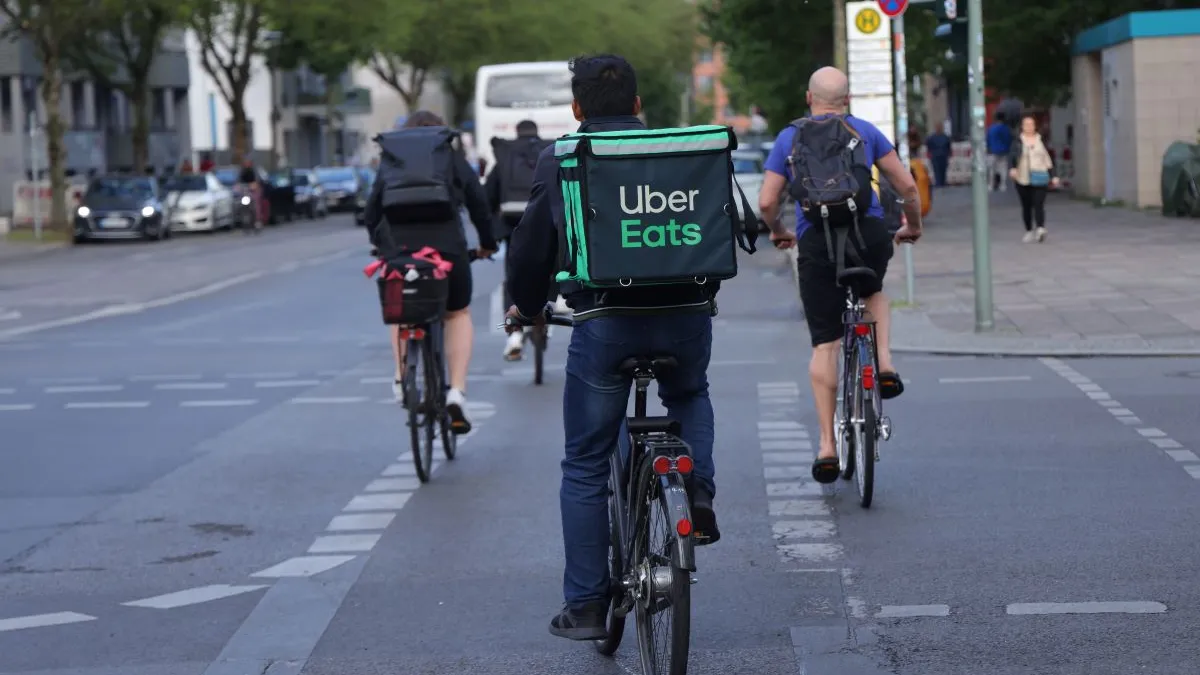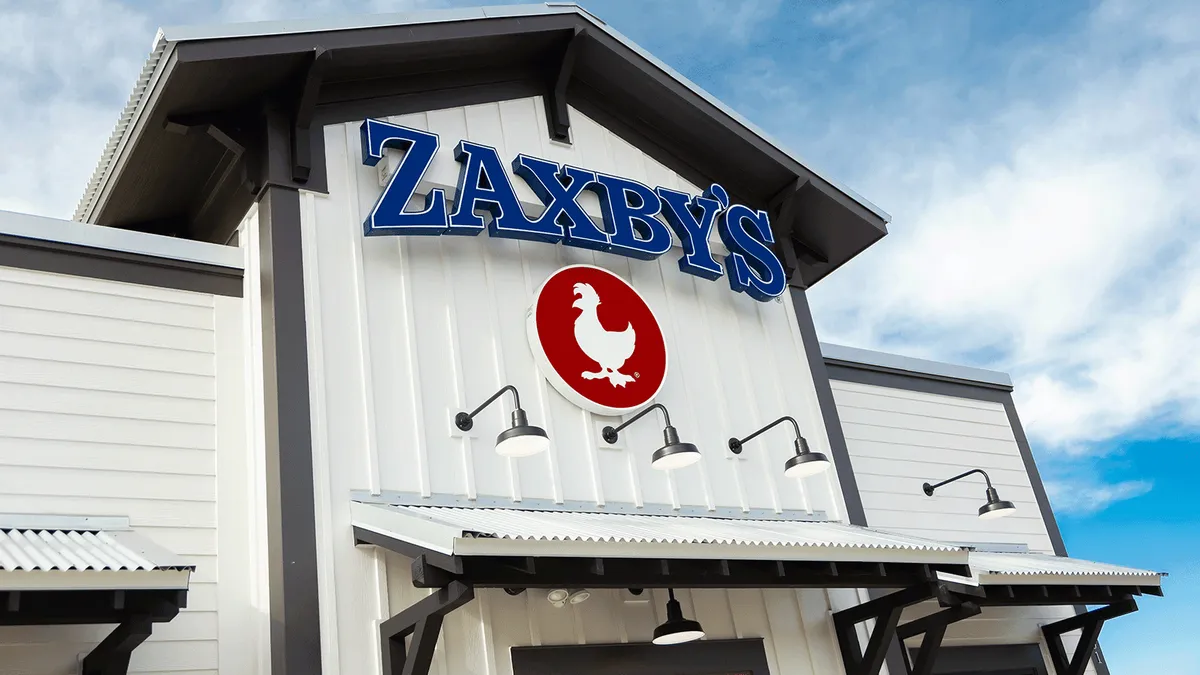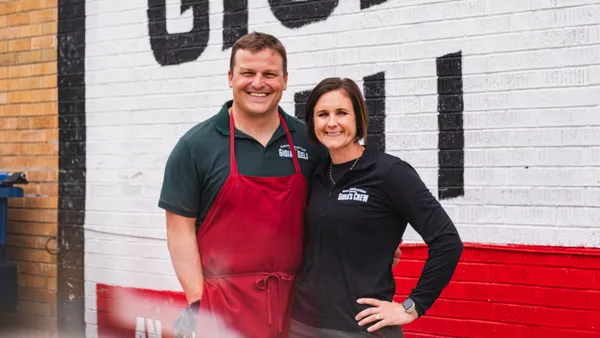When Kitchen United raised $100 million in Series C funding last year, it targeted shopping malls and supermarkets as growth channels in major metros. But less than a year later, the ghost kitchen platform is slowing its investment.
“In the mall environment, we were kind of at the mercy of what was happening in the mall independent of us,” Kitchen United Chief Business Officer Atul Sood said.
The ghost kitchen platform ran food between its mall-based food halls and delivery drivers, creating a drive-thru-like experience for third-party couriers so they didn’t have to park and enter the mall themselves, a process that could take about 15 minutes round trip, Sood said.
Now, the company is shifting its development focus toward its partnership with Kroger, which was a major investor in 2022’s funding round alongside mall giant Simon Property Group. Kroger allows Kitchen United deeper engagement with diners and restaurant operators, Sood said. The chain is also experimenting with delivery robots to beef up its omnichannel offerings in grocery stores and standalone outposts.
“In grocery, we are very close to the main entrances and exits of the grocery store and we have relationships with the restaurant brands that move into that environment. So we curate them based on the market demographic needs and the opportunities we see … and we then service them with the kitchen infrastructure itself,” Sood said. “We were doing none of that for the malls, which is why we’re kind of pulling away from that.”
The company isn’t closing extant mall outposts, but won’t expand further in these retail spaces, Sood said. On the grocery front, however, Kitchen United has built eight outposts at Kroger units over the last year, scaling up an initial three-store pilot. In the past two weeks, it opened two Kitchen United Mix locations in Indiana Kroger stores, Sood said.
The company feels supermarket shoppers are highly interested in tacking on a to-go restaurant meal to their shopping list and “is seeing that demand become a reality,” Sood said. Kroger-based Kitchen United Mix outposts are especially attractive to families, he said, because consumers can buy meals from multiple restaurant brands at its in-store kiosks without paying for delivery.
The model also caters to diners who want to grab and go, Sood said, because the Mix hubs are easy to reach and offer seating for those who want to eat on premise.
Grocery isn’t without its challenges, however.
“Consumers just weren't aware that you could get restaurant-branded food at grocery stores,” Sood said. “When you see four kitchens on the right and Starbucks on the left, you’re not necessarily sure what those kitchens do. They could be for prep for grocery, could be a number of things. … Basic education of the consumer interactions with the platform was our first hurdle to overcome.”
Highly visible signage, offering samples and investing in marketing pushes on social platforms, digital channels and radio have helped ease this learning curve, Sood said.
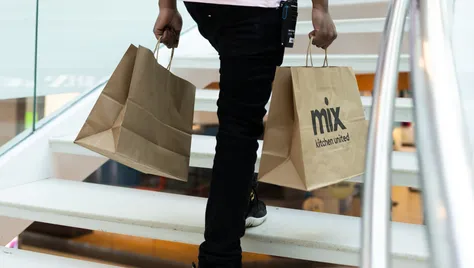
Public-facing real estate is a key asset
Operating in public-facing real estate, such as grocery stores or standalone brick-and-mortar units, attracts partner restaurants because it “is a major differentiator” for Kitchen United within the ghost kitchen segment, Kitchen United CEO Michael Montagano said during a Curbivore panel.
The platform targets centrally located hubs that make both delivery and pickup convenient, while also offering dine-in options.
Sweetfin, an 18-unit poke chain and Kitchen United partner, echoed the value of this model during a Curbivore panel.
“We’re really appreciative of the fact that their kitchens truly are centrally located in the central business districts — they’re not five miles away because there are good real estate deals [there],” said Seth Cohen, co-founder and president of Sweetfin. “They’re actually where people want to congregate, and more people are going to pick up and interact with your brand.”
Across formats, Kitchen United’s goal is the same, to make “delivery pickup more efficient, increase payloads for cars and ultimately make the customer more satisfied with a smaller fee,” Montagano said.
That push for efficiency includes testing robotic delivery, Montagano said.
“It’s critical that [orders] are coming to us natively through our platform and [are] sent to the right delivery engine at the right time to minimize costs and minimize the ultimate [delivery] time, and in a lot of cases that comes through a land drone,” he said.
Kitchen United uses delivery bots at its Ralph’s location in the Westwood neighborhood of Los Angeles, delivering to students across the street at the University of California, Los Angeles campus. It’s cheaper to use the bots rather than delivery drivers to fulfill delivery orders for these students because they are less than a mile away from the store, Montagano said. This younger consumer base is more open to receiving food from a robot. Kitchen United has also deployed delivery robots at its Third Street Promenade location in Santa Monica, California, where Chipotle recently announced it will pilot its new fast casual restaurant concept, Farmesa. That location will host Farmesa’s grand opening later this month.
“With Chipotle taking the lead on experimenting with us, I think that is a good sign,” Sood said of the Mix model’s value proposition for major operators.
The company is also in talks with several “notable” restaurants interested in partnerships, he said. According to its website, Kitchen United’s restaurant chain partners include The Halal Guys, White Castle, Hawaiian Bros, Saladworks and other brands.



